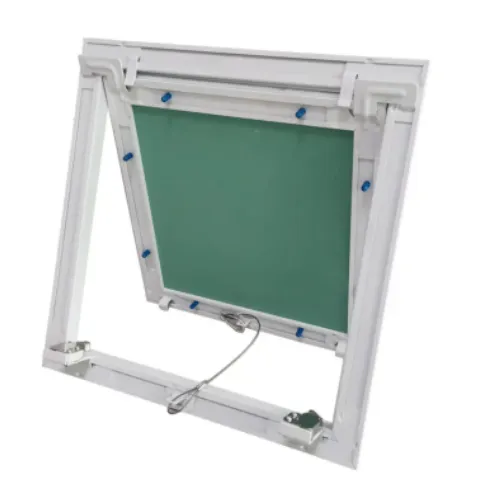9 月 . 16, 2024 22:47 Back to list
Ceiling Access Hatch Sizes - Specifications and Options
When it comes to building design and construction, one aspect that is often overlooked but is essential for functionality and safety is the ceiling access hatch. These hatches are key components, allowing for easy access to spaces above ceilings for maintenance, electrical work, and other essential tasks. However, the importance of selecting the right size for ceiling access hatches cannot be overstated.
Ceiling access hatches come in various sizes, which can significantly impact their effectiveness and usability. The most common sizes range from 24x24 inches to 36x36 inches, although custom sizes are also available to fit specific requirements. When choosing the right size, the primary consideration should be the intended use of the hatch. For example, if the hatch is meant to provide access for larger equipment or maintenance personnel, a larger size may be necessary. Conversely, if the hatch is only intended for small inspections or access to ducts, a smaller size may suffice.
Another important factor to consider is the location of the hatch. The hatch should be strategically placed in areas that require frequent access, such as near HVAC systems, plumbing, or electrical wiring. Placing the hatch in a convenient location can minimize disruption to daily activities and ensure that maintenance tasks can be performed efficiently. Furthermore, the surrounding structure must support the hatch’s size and weight. It is essential to consult building codes and standards during planning to ensure compliance and safety.
ceiling access hatch sizes

The material of the access hatch is also worth considering. Common materials include metal, plastic, and gypsum board. Metal hatches are typically more durable and can handle heavier loads, while plastic hatches are lightweight and easier to install. Gypsum board hatches can blend seamlessly with drywall ceilings, providing a clean finish. The choice of material can influence the longevity and functionality of the hatch, so it is crucial to choose according to the environmental conditions and expected use.
In addition to size and material, the type of access hatch mechanism—whether it is a drop-down, bi-fold, or slide-open design—also matters. Each mechanism type has its advantages; for instance, a drop-down hatch is easy to use and provides wide access, making it suitable for maintenance tasks that require ample room. In contrast, a bi-fold hatch can be ideal for tighter spaces while still offering a functional opening.
In conclusion, selecting the appropriate ceiling access hatch sizes involves careful consideration of use, location, material, and mechanism. Ensuring that hatches are appropriately sized and situated enhances accessibility for repairs and maintenance while ensuring compliance with safety regulations. It is always advisable to consult with a professional or refer to guidelines when deciding on the specific requirements for ceiling access hatches in your building project. Taking these factors into account will lead to a more efficient, safe, and functional space.
-
Revolutionizing Interior Design with Ceilings t grid Suspended SystemNewsOct.29,2024
-
Revolutionizing Ceiling Design with ceiling access panel with Gypsum Tile WaterproofNewsOct.29,2024
-
Revolutionizing Interior Design with PVC Gypsum Ceiling: A Comprehensive GuideNewsOct.29,2024
-
Elevating Interior Design with High quality Mineral Fiber Ceiling TilesNewsOct.29,2024
-
Revolutionizing Interior Design with PVC Gypsum Ceiling: A Comprehensive GuideNewsOct.29,2024
-
Elevating Interior Design with High-Quality Mineral Fiber Ceiling Tiles: A Comprehensive GuideNewsOct.29,2024







